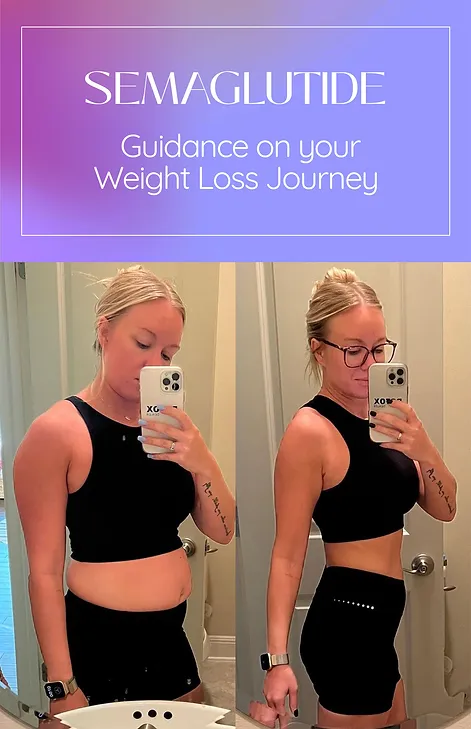New location opening soon in Bee Caves!
New location opening soon in Bee Caves!

Research continues to show the effectiveness of semaglutide injections for weight loss. It also highlights the value of treating obesity as a chronic metabolic disease instead of expecting people to rely solely on willpower and lifestyle changes to manage their condition. But semaglutide is not a miracle drug. And it’s not for everyone. To maintain your healthy weight once you have completed your semaglutide program, you must begin to incorporate fitness and nutrition goals. Here are some thoughts to consider while on one of our programs or if you’re considering starting!
Our program is designed to taper you off of the medication. This allows your body to adjust to your lifestyle and dietary selections. Stopping Semaglutide abruptly may cause a sudden increase in blood sugar levels. It is important to continue to monitor your blood sugar levels after stopping Semaglutide, and to work with a health coach or nutritionist to develop a plan for managing your weight and health. We offer health coaching and nutritional guidance at Body Tonic Rx so you can maintain your weight loss and keep feeling your best!
It is not recommended to drink alcohol while taking semaglutide. Semaglutide reduces the absorption of several nutrients, including vitamins and minerals, not just glucose. Alcohol does the same, and therefore can create malnutrition problems or nutritional deficits. Patients who are not adequately nourished can be at risk for hypoglycemia. What’s more, the drug interactions between alcohol and sulphonylureas are known to trigger dangerously low blood glucose levels, which are very difficult to correct and may require hospitalization for emergency blood sugar control.
In most cases, patients will be fine consuming alcohol moderately. Moderate alcohol consumption is fewer than two drinks per day. However, each patient has their own risk factors, and Semaglutide can modify this volume of alcohol. If you choose to drink alcohol, please discuss your intake with your provider prior to beginning this program.
Yes, some foods can make the side effects worse. These include high-fat foods, sugary foods, and alcoholic beverages. Eating these types of foods can also raise your blood sugar levels. The most common side effects reported are nausea and mild stomach pain. Fortunately, you can prevent or reduce these side effects by taking care of what you eat. Fatty and fried foods, for example, fast food, and foods that are high in sugar, are usually the most difficult for the body to digest and will most likely cause nausea while taking Semaglutide.
If you continue to experience nausea, consider doing the following:
There are no specific foods that you need to eat while on this program. However, it is recommended to eat a healthy diet that is low in fat, sugar, and calories in order to prevent high blood sugar. This type of diet can help you control your blood sugar levels and lose weight. Focus on meal plans that include eating healthy foods like:
We love seeing each of you every week! If you feel more comfortable swinging by the clinic to receive your injection and jump on the InBody scan, we hope you keep showing us your beautiful face! However, we know how valuable your time is. Please inform your provider that you would prefer the drop-ship option and you will receive one month of injections direct to your doorstep.
Here are the general steps for giving yourself a shot of Semaglutide:
It is important to follow the instructions provided by your healthcare provider and to dispose of used needles and syringes safely. If you are unsure about how to perform a subcutaneous injection, ask your healthcare provider for further guidance.